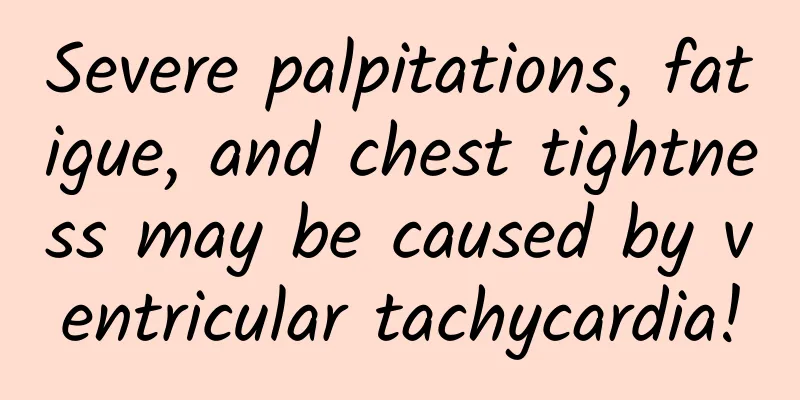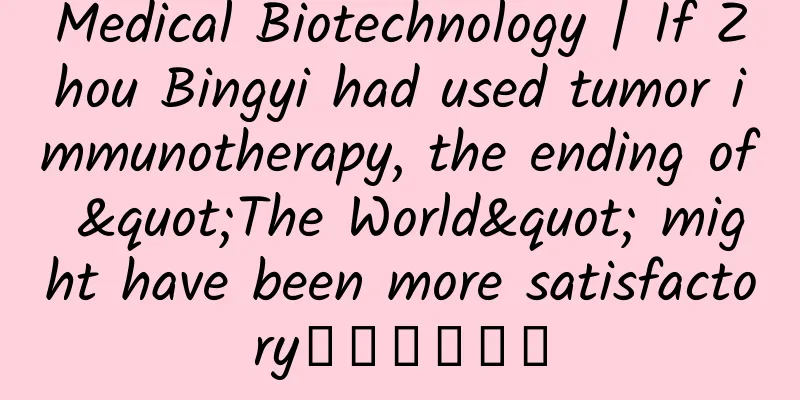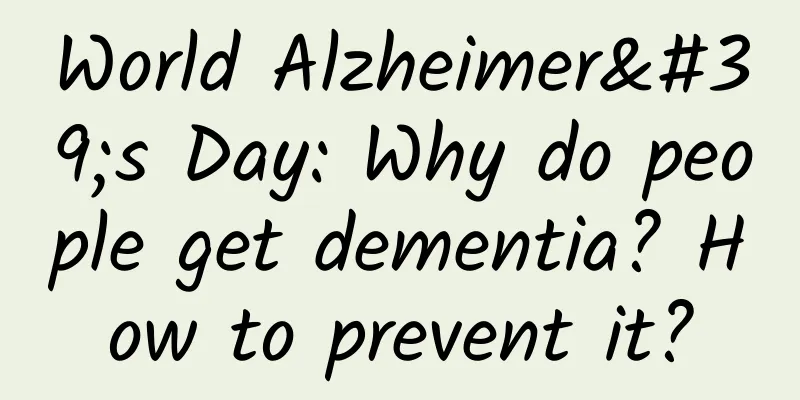Severe palpitations, fatigue, and chest tightness may be caused by ventricular tachycardia!

|
Author: Liu Xingpeng, Chief Physician, Beijing Chaoyang Hospital, Capital Medical University Reviewer: Zhang Yu, researcher at Chinese Center for Disease Control and Prevention "VT" is the abbreviation for ventricular tachycardia. Since it is ventricular tachycardia, its lesion must come from the ventricles. The heartbeat is over 100 beats/minute, and this abnormal heart beat occurs at least 3 times per minute. It is reflected on the electrocardiogram as a wide and deformed QRS wave. Figure 1 Original copyright image, no permission to reprint 1. What are the symptoms of ventricular tachycardia? Whether the symptoms of ventricular tachycardia are severe depends on two factors: The first aspect is the frequency of ventricular tachycardia, which is how fast the heart beats. If the heart rate is just over 100 beats/minute, such as 120 or 130 beats/minute, many patients may not have severe symptoms. But if it reaches 200 beats/minute, or even faster, then the symptoms are very serious. Another factor is whether there are other heart diseases. If there are no other heart diseases, some young people can tolerate very fast ventricular tachycardia. However, if they already have other heart diseases, such as myocardial infarction, and ventricular tachycardia occurs at this time, their symptoms will be very severe. What are the main symptoms? Figure 2 Original copyright image, no permission to reprint The first is severe palpitations, such as very severe heart palpitations; The second is severe fatigue, where the patient suddenly feels unable to move, or feels sweaty and severely fatigued; Some patients may experience severe chest tightness; In the worst cases, the patient may faint, syncope, or suffer sudden death and suddenly lose his life. 2. How to treat ventricular tachycardia? There are many ways to treat ventricular tachycardia: The first is medication. Most ventricular tachycardia patients need to take medication. The most commonly used medication is called beta-blockers, followed by antiarrhythmic drugs. These are the two main types of drugs. If drug treatment is ineffective, we will choose minimally invasive catheter radiofrequency ablation surgery, which uses radiofrequency current to coagulate and necrotize the diseased area of the ventricle, thereby achieving the therapeutic effect. There is another treatment for ventricular tachycardia, which we call ICD. ICD is the abbreviation of Implantable Cardioverter Defibrillator. Figure 3 Original copyright image, no permission to reprint When some patients have ventricular tachycardia, their heart rate is very fast and their lives may be in danger. In order to prevent such adverse consequences, or if we consider that the success rate of catheter radiofrequency ablation is very low, we will recommend that patients install ICD. This ICD is a device installed in the patient's body, which is equivalent to a "bodyguard". For example, if ventricular tachycardia occurs at home and there are no medical staff or hospitals around, the ICD will turn the tide and immediately stop the ventricular tachycardia, so it is a life-saving treatment. Therefore, the treatments for ventricular tachycardia can be roughly divided into three types: medication, catheter radiofrequency ablation surgery, and ICD. 3. What should patients with ventricular tachycardia pay attention to in their daily life? Most cases of ventricular tachycardia have a triggering cause. Some idiopathic ventricular tachycardia is often related to excessive emotional excitement and heavy exercise. Some pathological ventricular tachycardia is often related to the progression of organic heart disease. For example, worsening heart failure is prone to ventricular tachycardia. Of course, for the lifestyle of ventricular tachycardia patients, we emphasize more on a healthy lifestyle, regular work and rest, balanced diet, proper exercise and so on. Especially for some patients with ventricular tachycardia on the basis of organic heart disease, we do not recommend that patients engage in high-intensity exercise, because it can easily induce the occurrence of ventricular tachycardia. If there is no ICD to protect them at that time, it may be life-threatening. Figure 4 Original copyright image, no permission to reprint As for ordinary people like us, everyone may have different choices, which also depends on the region and culture, but the more consistent ones include walking, swimming, and some people like to play diabolo, practice Tai Chi, etc. These are all good ways to exercise. Modern medicine believes that strenuous exercise, especially competitive strenuous exercise, is very harmful to the heart. We know that some athletes, such as those who died suddenly on the field while playing football, may have developed ventricular tachycardia during intense exercise, which in turn triggered ventricular fibrillation, resulting in more serious consequences. So now it is believed that strenuous exercise, especially for some middle-aged and elderly people, may have more disadvantages than advantages, but moderate exercise and non-competitive exercise are fine. |
Recommend
Feeling "chest tightness, shortness of breath"? Please don't breathe deeply!
This is the 4577th article of Da Yi Xiao Hu If th...
What are the methods for growing peonies indoors? The growth habits of peonies
The only real flower in the world is the peony. O...
What is the reason for small fleshy bumps on the vulva?
If women do not pay attention in their daily live...
Can you eat chili peppers during pregnancy?
I believe everyone must be very familiar with chi...
Is candidal vaginitis contagious?
Candida vaginitis is a type of vaginitis and a di...
Will hula hooping cause miscarriage during pregnancy?
I believe that many pregnant women know that it i...
Is bird's nest good for ovarian follicles?
As a woman's organs gradually mature, an egg ...
Is B-ultrasound accurate for breast examination?
When it comes to breast diseases, many people don...
How many minutes should you boil eggs to make them tasty? This experiment will tell you!
You have all eaten eggs, right? There are so many...
What is uterine prolapse?
Uterine prolapse is a relatively common gynecolog...
Is it reliable to use panty liners to treat adenomyosis?
Adenomyosis is a gynecological disease that is mo...
What are the nutritional values of stewed pork ribs with tea tree mushrooms? How to stew pork ribs with tea tree mushrooms
Agrocybe aegerita is a kind of mushroom food that...
Brown discharge in early pregnancy
In the early stages of pregnancy, many pregnant w...
The difference between biochemical and ectopic pregnancy hcg
Women all know that checking hcg is to detect whe...
Women who eat more "good" food will have healthy breasts and no worries
Recently, an article pointed out that 90% of wome...
![[Doctors Talk About Medicine] Uncovering the Secrets of Fatty Liver Disease! How to Determine Whether You Have This Common Disease?](/upload/images/67f173184020e.webp)








